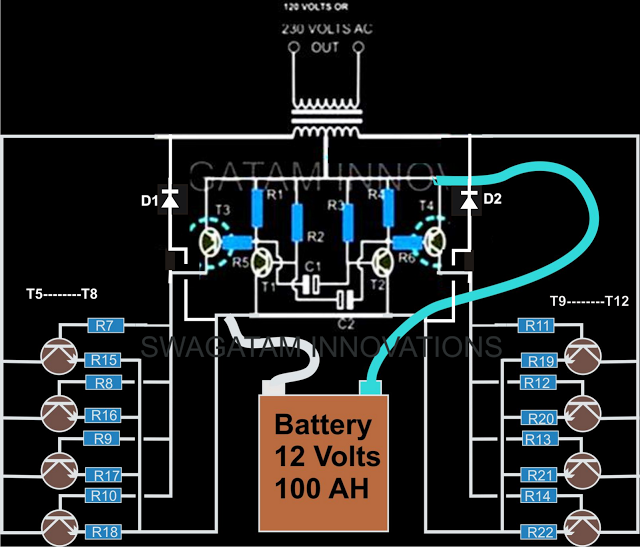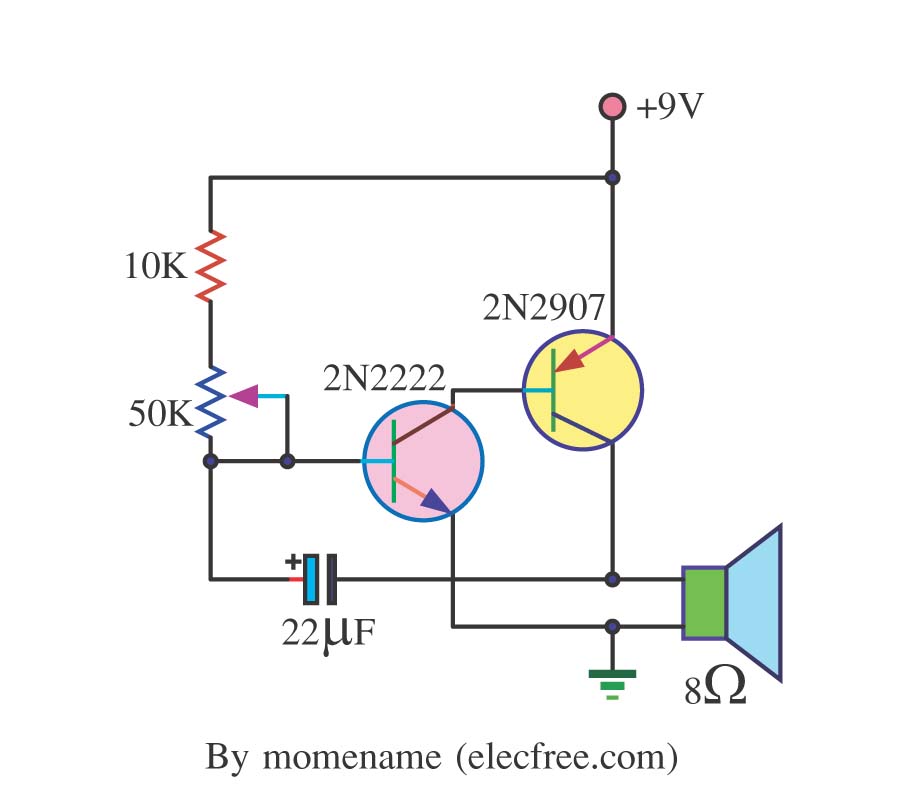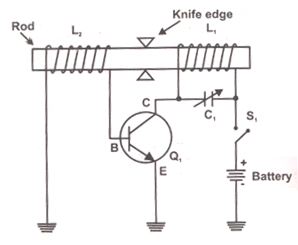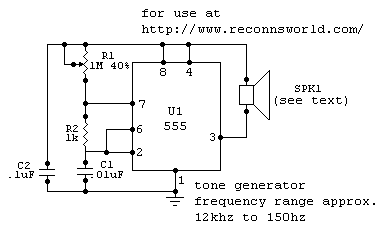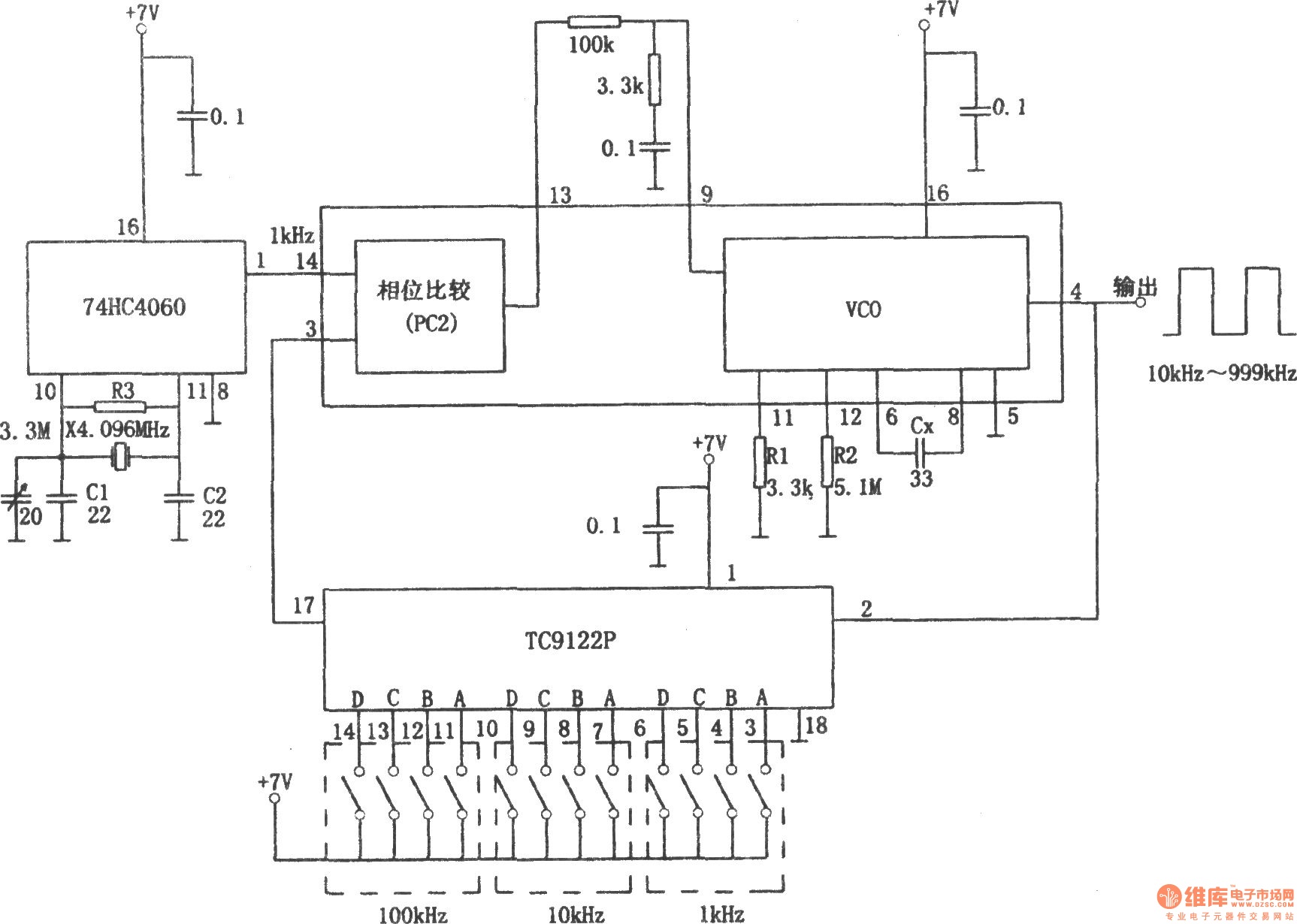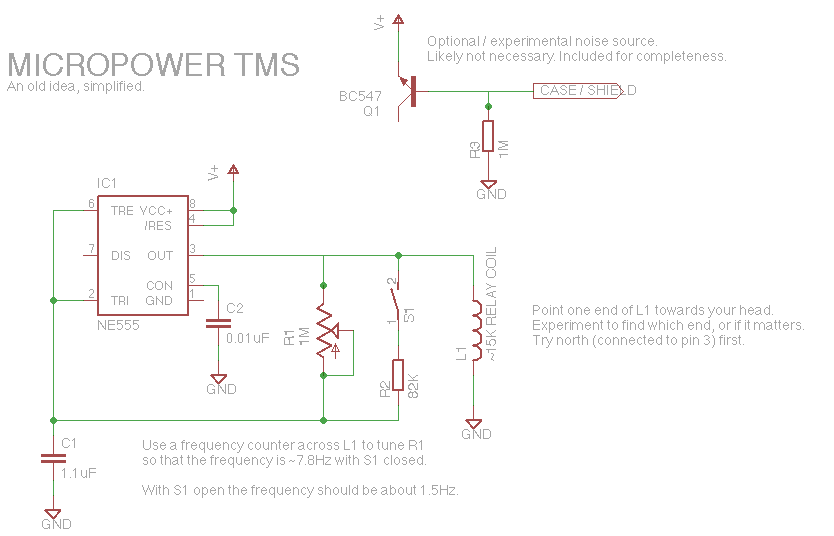
Square Wave Generator
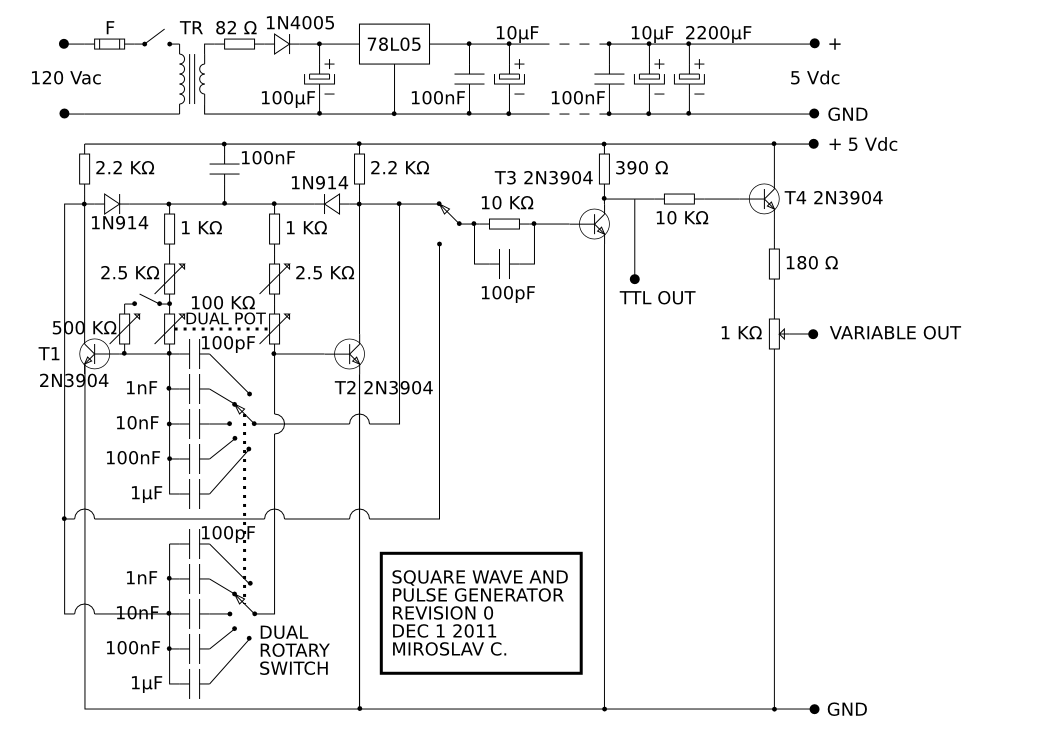
One unit is in good condition, manufactured in 1979, and is capable of generating sine, triangle, and square waveforms. This unit is retained and utilized as the primary function generator for testing purposes at the main office location. The other three units were either non-functional or only worked sporadically. They were all produced in the 1950s or early 1960s and used electron tubes of two different types. High voltage was acceptable on all units, but the output was either lacking or intermittent. It was decided to scrap these units while salvaging the working tubes, transformers, and metal for future projects, and to construct a new function generator using only transistors. This new generator is intended for use in the machine shop. The design of the new generator aims to incorporate various features and utilize components from the scrapped vacuum-tube generators where feasible. Although a transistor-only design may seem unconventional today, it presents a challenge and serves a nostalgic purpose. The ease of extracting transistors from equipment, especially in resource-limited situations, makes them a practical choice. For instance, a BC108 transistor can function equivalently to a 2N2222 in a low-frequency amplifier without necessitating changes in external components. Therefore, a transistor-based design is advantageous in scenarios where integrated circuits may be less accessible. The use of a voltage regulator IC, such as the 78L05, is acceptable as it enhances frequency stability. While the device operates effectively without regulation, frequency drift with an unregulated power supply is around 2-3%, whereas with a 5V voltage regulator, it remains below 1% over a 24-hour period. A notable concern is the dual rotary switch with five positions; if unavailable, a regular DPDT switch can be used for two bands. Resistance can be adjusted with fixed resistors to extend the tuning range. Alternatively, dual-ganged variable resistors with Darlingtons can replace standard transistors for broader tuning capabilities. With these considerations, it is feasible to achieve frequency ranges of 10 Hz to 1 kHz for band A and 1 kHz to 100 kHz for band B. If a DPDT switch is not an option, a single band can be utilized without a switch. In the absence of dual-ganged variable resistors, two regular potentiometers can be employed, resulting in a tuning process that involves adjusting both pots. For several weeks, various configurations of sine and square-wave oscillators were tested, each presenting its own advantages and drawbacks. The Wien-bridge oscillator was explored, with two different transistor-based designs showing limited effectiveness within narrow frequency ranges. Initial gain settings needed to be slightly above 3 and then adjusted to 3 for minimal distortion. Historically, a small lightbulb was used to provide variable resistance for gradual gain reduction. LC oscillators proved challenging at lower frequencies, necessitating a variable coil due to the limited impact of a 500 picofarad variable capacitor when paired with a large 100 mH coil. However, LC oscillators excel in radio frequency applications. The astable multivibrator was also considered, as it produces square waves and pulses, is easy to implement, and operates effectively across a wide voltage range.
The proposed function generator circuit will utilize a transistor-based architecture to generate a variety of waveform outputs, including sine, triangle, and square waves. The primary components will include transistors, resistors, capacitors, and a voltage regulator, with careful consideration given to the selection of transistors to ensure compatibility and performance. The circuit will be designed to accommodate dual frequency bands, enabling operation across a broad range of frequencies.
For sine wave generation, a Wien-bridge oscillator configuration will be implemented, utilizing feedback mechanisms to maintain stability and minimize distortion. The gain will be carefully adjusted using a combination of fixed resistors and variable components to ensure optimal performance. The use of a lightbulb in the circuit will facilitate dynamic gain control, allowing for gradual adjustments as the oscillator stabilizes.
In addition to the Wien-bridge oscillator, a square wave output will be generated using an astable multivibrator configuration. This will ensure that square waveforms are produced consistently and reliably, with the ability to adjust the frequency through the selection of timing components.
The incorporation of dual-ganged variable resistors will enable fine-tuning of the frequency output, while the option to use standard potentiometers will provide flexibility in component sourcing. The overall design will prioritize simplicity and reliability, ensuring that the function generator can be constructed with readily available components while delivering high performance across its intended frequency range.
The circuit layout will be carefully designed to minimize noise and interference, with adequate decoupling and bypass capacitors employed to maintain signal integrity. The final implementation will be tested rigorously to confirm that the frequency stability and waveform quality meet the desired specifications, ensuring that the function generator serves its intended purpose effectively in both lab and field applications.One is in good shape, made in 1979, and capable of producing sine, triangle and square waveforms. This one is retained and used as main function generator for testing purposes at my main office location. Other three were not working, or working sporadically. They were all from 1950-ies or early 1960-ies, with electron tubes, of two different types. High voltage was ok on all of them, but output was lacking or intermittent. I decided to scrap them, keep the working tubes, transformers and metal for future projects, and make a new function generator using only transistors. This new generator will be used in the machine shop location. New generator was supposed to have all the bells and whistles, and use case and if possible other parts from the scrapped vacuum-tube generators.
Transistor-only design might seem strange at this day and age. However, I wanted to challenge myself. And there was another, somewhat nostalgic reason: I have spent some years in a war zone, and I can appreciate how difficult it is to extract chips from boards (and get their datasheets) during times of war. Transistors were easily removed from equipment, and were not critical when in different role. BC108 will work just as well as 2N2222 in a LF amplifier for instance - often without any change in external components.
Therefore, transistor design has a practical second and third world use, IC based one much less so. No special chip Tough luck. It`s not going to arrive on a mortar round. So, for all the people in the world that are maybe now in the similar situation that I was some 20 years ago, it is going to be a simple and reliable, no frills build. Use of a voltage regulator IC is not cheating. Device works perfectly well without it, frequency is just more stable with regulator. Frequency drift using unregulated power supply is only 2-3 %. Frequency drift with 5 V voltage regulator, measured in a 24 hour run, is always less than 1%. And anyway, 78L05 is a three terminal device :) Complaint that`s more to the point is the dual rotary switch with 5 positions.
If you can`t find it, you can use regular DPDT switch for two bands only. Bands can be "streched" by using smaller band shortening fixed resistors (1 Kiloohm in my schematic). This will increase total ratio of resistance change and provide wider range (and coarser) tuning. Other option is to use Megaohm dual-ganged base variable resistors with Darlingtons instead of regular transistors (see here, Figure 14).
With those measures, it is possible to achieve say 10 Hz - 1 KHz band A and 1 KHz - 100 KHz band B. No DPDT switch / just lazy you say Use one band only and you don`t need a switch at all. You have no dual-ganged variable resistors Ok, just find two regular potentiometers. Your tunning will now involve adjusting 2 pots, but that is a small price to pay for a working function generator, if nothing else is available. For several weeks, when time permitted, I was testing different configurations of sine and square-wave oscillators.
They all had some advantages and shortcomings. Very good overview page: Wien-bridge oscillator: I tried two different transistor based designs and they only worked well in narrow range, and there was a number of other problems. Gain had to be set to little above 3 initially and then lowered to 3 for least amount of distortion. A small lightbulb was often used in the past to provide changing resistance for gradual gain reduction.
Resistance of the bulb would increase after the power is applied, decreasing positive feedback and gain. LC oscillators: really hard to use at lower frequencies. And your 500 picofarad variable cap is not going to change much of a frequency when connected to a large 100 mH coil.
So a variable coil is needed. LC oscillators are excellent for radio range though. Astable multivibrator : produces square waves and pulses, easy to get to work, stable and works with wide variety of voltage s 🔗 External reference
The proposed function generator circuit will utilize a transistor-based architecture to generate a variety of waveform outputs, including sine, triangle, and square waves. The primary components will include transistors, resistors, capacitors, and a voltage regulator, with careful consideration given to the selection of transistors to ensure compatibility and performance. The circuit will be designed to accommodate dual frequency bands, enabling operation across a broad range of frequencies.
For sine wave generation, a Wien-bridge oscillator configuration will be implemented, utilizing feedback mechanisms to maintain stability and minimize distortion. The gain will be carefully adjusted using a combination of fixed resistors and variable components to ensure optimal performance. The use of a lightbulb in the circuit will facilitate dynamic gain control, allowing for gradual adjustments as the oscillator stabilizes.
In addition to the Wien-bridge oscillator, a square wave output will be generated using an astable multivibrator configuration. This will ensure that square waveforms are produced consistently and reliably, with the ability to adjust the frequency through the selection of timing components.
The incorporation of dual-ganged variable resistors will enable fine-tuning of the frequency output, while the option to use standard potentiometers will provide flexibility in component sourcing. The overall design will prioritize simplicity and reliability, ensuring that the function generator can be constructed with readily available components while delivering high performance across its intended frequency range.
The circuit layout will be carefully designed to minimize noise and interference, with adequate decoupling and bypass capacitors employed to maintain signal integrity. The final implementation will be tested rigorously to confirm that the frequency stability and waveform quality meet the desired specifications, ensuring that the function generator serves its intended purpose effectively in both lab and field applications.One is in good shape, made in 1979, and capable of producing sine, triangle and square waveforms. This one is retained and used as main function generator for testing purposes at my main office location. Other three were not working, or working sporadically. They were all from 1950-ies or early 1960-ies, with electron tubes, of two different types. High voltage was ok on all of them, but output was lacking or intermittent. I decided to scrap them, keep the working tubes, transformers and metal for future projects, and make a new function generator using only transistors. This new generator will be used in the machine shop location. New generator was supposed to have all the bells and whistles, and use case and if possible other parts from the scrapped vacuum-tube generators.
Transistor-only design might seem strange at this day and age. However, I wanted to challenge myself. And there was another, somewhat nostalgic reason: I have spent some years in a war zone, and I can appreciate how difficult it is to extract chips from boards (and get their datasheets) during times of war. Transistors were easily removed from equipment, and were not critical when in different role. BC108 will work just as well as 2N2222 in a LF amplifier for instance - often without any change in external components.
Therefore, transistor design has a practical second and third world use, IC based one much less so. No special chip Tough luck. It`s not going to arrive on a mortar round. So, for all the people in the world that are maybe now in the similar situation that I was some 20 years ago, it is going to be a simple and reliable, no frills build. Use of a voltage regulator IC is not cheating. Device works perfectly well without it, frequency is just more stable with regulator. Frequency drift using unregulated power supply is only 2-3 %. Frequency drift with 5 V voltage regulator, measured in a 24 hour run, is always less than 1%. And anyway, 78L05 is a three terminal device :) Complaint that`s more to the point is the dual rotary switch with 5 positions.
If you can`t find it, you can use regular DPDT switch for two bands only. Bands can be "streched" by using smaller band shortening fixed resistors (1 Kiloohm in my schematic). This will increase total ratio of resistance change and provide wider range (and coarser) tuning. Other option is to use Megaohm dual-ganged base variable resistors with Darlingtons instead of regular transistors (see here, Figure 14).
With those measures, it is possible to achieve say 10 Hz - 1 KHz band A and 1 KHz - 100 KHz band B. No DPDT switch / just lazy you say Use one band only and you don`t need a switch at all. You have no dual-ganged variable resistors Ok, just find two regular potentiometers. Your tunning will now involve adjusting 2 pots, but that is a small price to pay for a working function generator, if nothing else is available. For several weeks, when time permitted, I was testing different configurations of sine and square-wave oscillators.
They all had some advantages and shortcomings. Very good overview page: Wien-bridge oscillator: I tried two different transistor based designs and they only worked well in narrow range, and there was a number of other problems. Gain had to be set to little above 3 initially and then lowered to 3 for least amount of distortion. A small lightbulb was often used in the past to provide changing resistance for gradual gain reduction.
Resistance of the bulb would increase after the power is applied, decreasing positive feedback and gain. LC oscillators: really hard to use at lower frequencies. And your 500 picofarad variable cap is not going to change much of a frequency when connected to a large 100 mH coil.
So a variable coil is needed. LC oscillators are excellent for radio range though. Astable multivibrator : produces square waves and pulses, easy to get to work, stable and works with wide variety of voltage s 🔗 External reference
